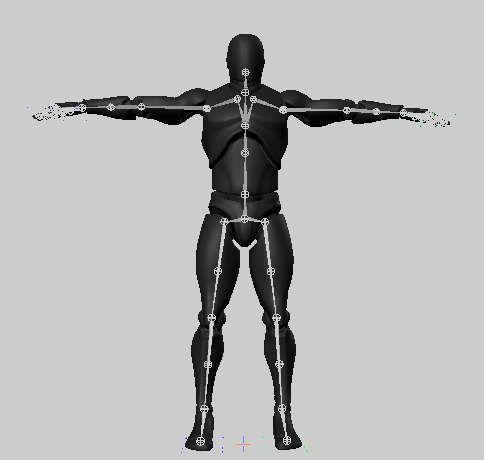Sequential Learning for Dance generation
Generating dance using deep learning techniques.
The proposed model is shown in the following image:

The joints of the skeleton employed in the experiment are shown in the following image:

Use of GPU
If you use GPU in your experiment, set --gpu option in run.sh appropriately, e.g.,
$ ./run.sh --gpu 0
Default setup uses GPU 0 (--gpu 0). For CPU execution set gpu to -1
Execution
The main routine is executed by:
$ ./run.sh --net $net --exp $exp --sequence $sequence --epoch $epochs --stage $stage
Being possible to train different type of datasets ($exp)
To run into a docker container use the file (run_in_docker.sh) instead of (run.sh)
Unreal Engine 4 Visualization
For demostration from evaluation files or for testing training files use (local/ue4_send_osc.py).
For realtime emulation execute (run_realtime.sh).
Requirements
For training and evaluating the following python libraries are required:
- chainer=>3.1.0
- chainerui
- cupy=>2.1.0
- madmom
- Beat Tracking Evaluation toolbox. The original code is found here
- mir_eval
- transforms3d
- h5py, numpy, soundfile, scipy, scikit-learn, pandas
Install the following music libraries to convert the audio files:
$ sudo apt-get install libsox-fmt-mp3
Additionally, you may require Marsyas to extract the bet reference information.
For real-time emulation:
- pyOSC (for python v2)
- python-osc (for python v3)
- vlc (optional)
ToDo:
- New dataset
- Detailed audio information
- Virtual environment release
Acknowledgement
- Thanks Johnson Lai for the comments
References
[1] Nelson Yalta, Shinji Watanabe, Kazuhiro Nakadai, Tetsuya Ogata, “Weakly Supervised Deep Recurrent Neural Networks for Basic Dance Step Generation”, arXiv
[2] Nelson Yalta, Kazuhiro Nakadai, Tetsuya Ogata, “Sequential Deep Learning for Dancing Motion Generation”, SIG-Challenge 2016